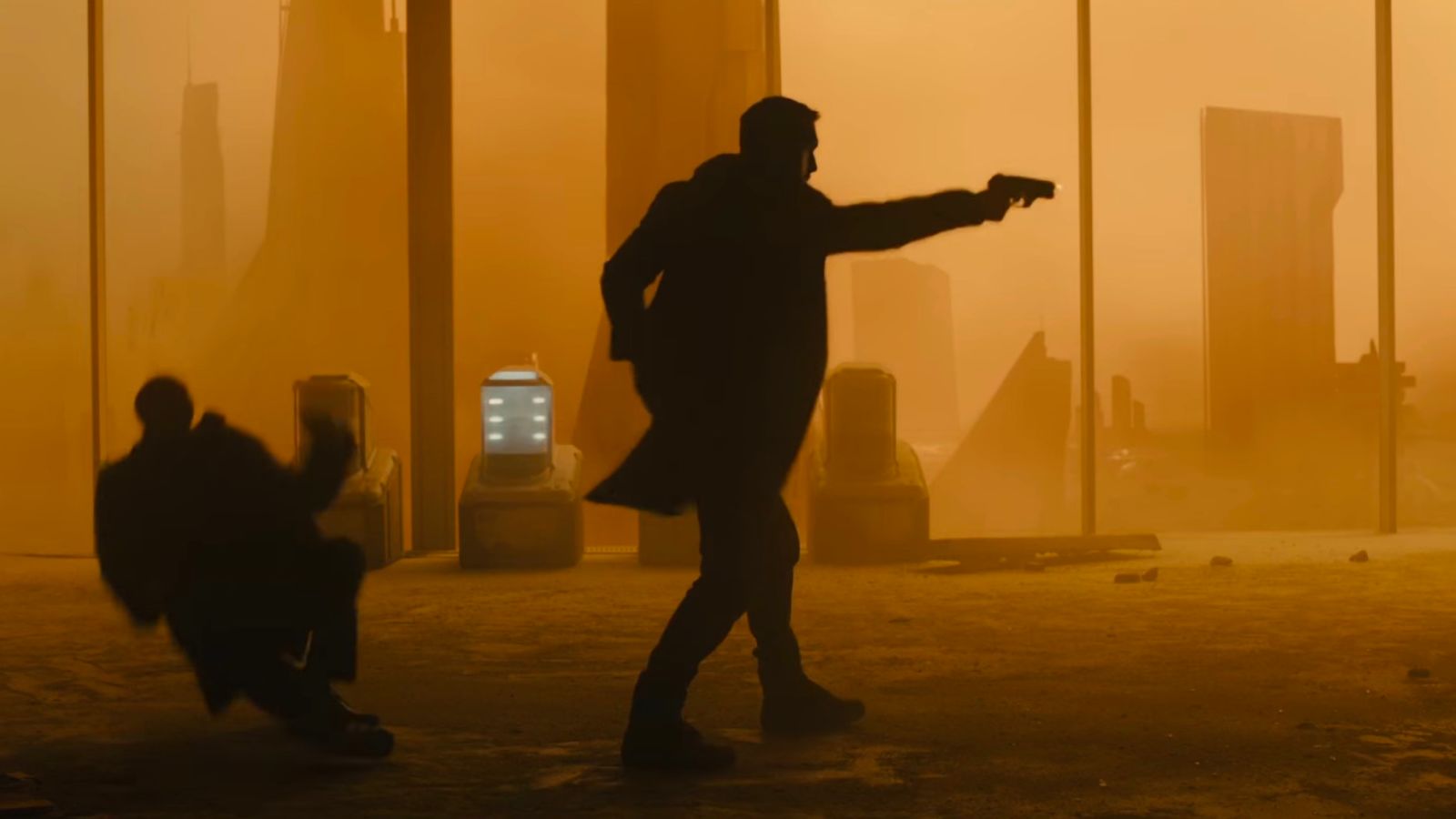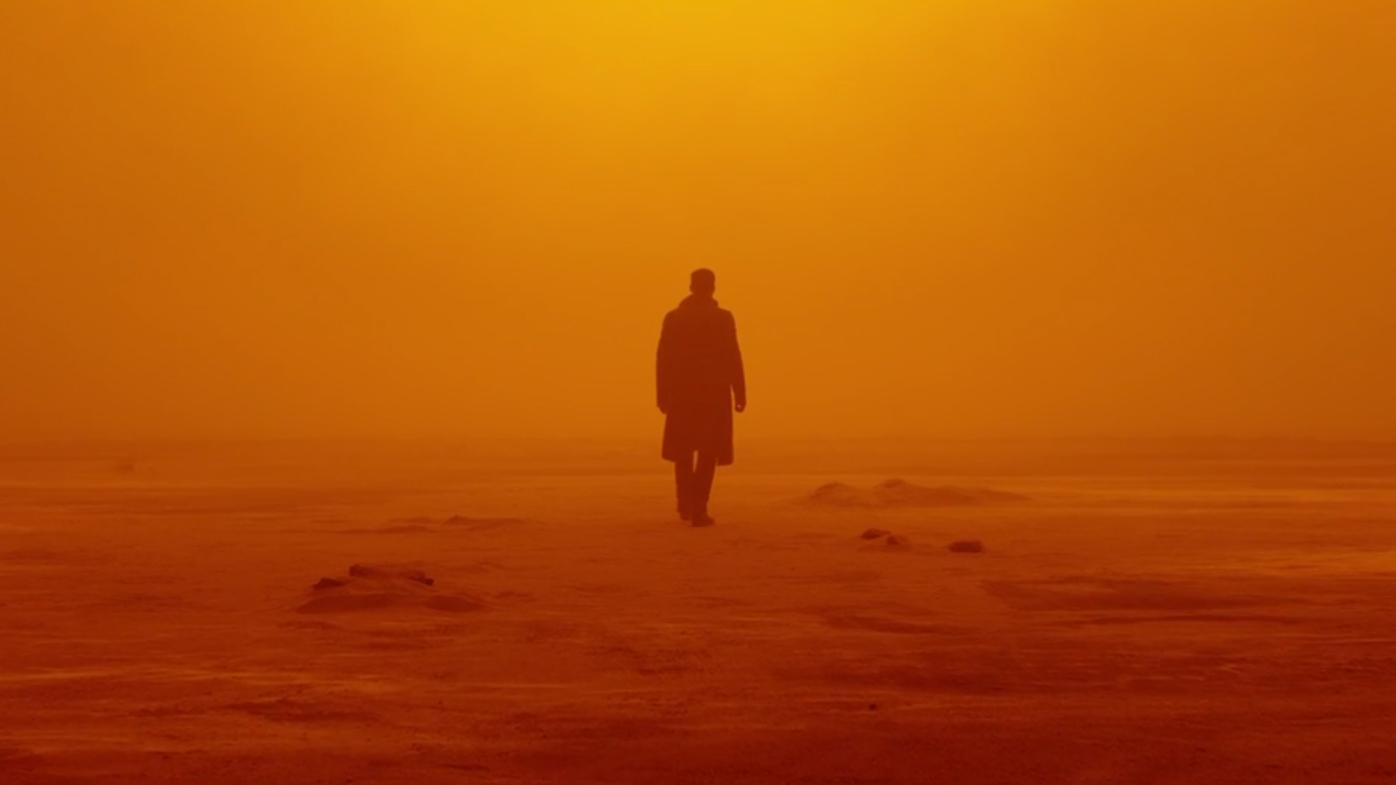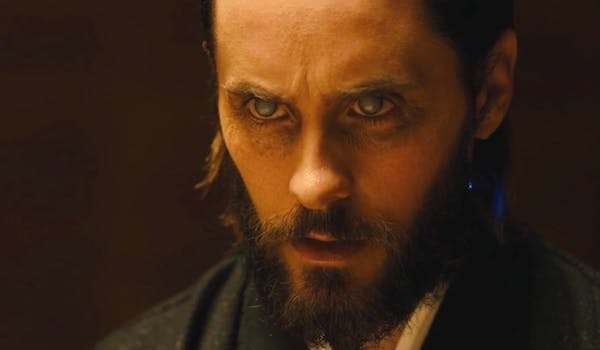4. The Philosophy of the Blockbuster

Action sequences are pleasingly few and far between in Blade Runner 2049 to such an extent that they almost feel as if Villeneuve had to fill a certain percentage of the film with “stuff happening on screen”. The small number of set pieces that are displayed however is truly exhilarating yet one of the more bizarre compliments that can be paid to Blade Runner 2049 is that it does not need any action sequences. Villeneuve and Deakins have proven that set pieces are a strong part of their repertoire (the traffic jam sequence in Sicario in particular is extraordinary) and, when needed, they work their magic again.
But without those small chases and fight sequences (and ignoring the enormous budget) defining Blade Runner 2049 as a blockbuster becomes problematic, simply because there is nothing quite like this in cinema anywhere. Blade Runner was never about fight sequences and awe-inducing stunt-work but about ideas, attempting to explore the nature of humanity, and meeting our makers.
The high critical praise the film has received is absolutely justified, although perhaps a portion of that is relief that Villeneuve has created a film that could be described as an arthouse blockbuster. It is with great optimism that the film will still be held in its current regard in ten or twenty years, as the questions and ideas that are posed are not concurrent with blockbuster cinema.
5. The Quality of Immersion into 2049

Repeat viewings of Blade Runner 2049 should be mandatory, quite simply because on the first watch there is far too much to take in at once. On a visual level, the film is unparalleled: the level of detail in the world of the film is exquisite to the point where you want to pause every shot to examine the minutiae of each frame, from the vast cityscapes to the small cameras that hover around Wallace, examining his newly created replicants.
The film never forgets it’s heritage; there is certainly a knowing respect from Villeneuve to Ridley Scott’s Blade Runner (Scott worked as an executive producer), and the predecessor lays such solid foundations for the latest film to expand and explore not only further afield, but also the changes in the world thirty years later.
The score has a great part to play in the immersion in Blade Runner 2049. As Deakin’s camera hovers over extraordinary scenery, the work of Zimmer and Wallfisch comes into its full power, overwhelming the sense with an extraordinary blend of intimacy and synths that demonstrate the phenomenal size and scale of the Los Angeles.
6. Ideas over Narrative

Ridley Scott’s Blade Runner had such a troubled production that it took over twenty years for his version to see the light of day, with all the problematic elements of the original cut taken out. Deckard’s voice-overs and the “happy ending” were replaced and this resulted in a narrative as simplistic as possible, giving Scott the time to explore the philosophy of the world he had created.
While Harrison Ford was the star of the film, it was Rutger Hauer’s Roy Batty that carried the emotional weight of the film, an antagonist desperately searching for his maker, trying to find out his purpose in life. Blade Runner has the question of “is Deckard a replicant?” hanging over its head, and Blade Runner 2049 embraces this question and teases out possibilities where Deckard is both human and android. It would be fair to say that Wallace (Jared Leto) has the definitive answer that fans seek, yet he delights in teasing both Deckard and all those in the cinema without giving confirmation to anyone.
The philosophy of Blade Runner 2049 is rooted into every one of its characters, most prominently K’s attempt to uncover the mystery of a child born of a replicant. Throughout the first two acts of the film, there is almost an expectation that the child will be K himself, before that prediction is wisely and intelligently dismissed.
Introducing a new line of replicants that are programmed to obey means that they are presented more in the context of slaves than the off-world workers of Blade Runner, who were never seen in any other light than as fugitives hiding on Earth. In this regard, K’s relationship with Joi, his “pleasure-bot” requires deep examination.
If all new replicants are slaves, then female replicants are simply at the beck and call of their male masters, regardless of whether they are human or android. Certainly Blade Runner 2049 solves some gender representation issues from Blade Runner (the perceived romance of Deckard and Rachel is chillingly forced and uncomfortable), but Villeneuve sticks with Scott’s idea that the bleak future presented is no place for women to feel at home.
7. Inspiring a new generation of filmmakers

Walking out of Blade Runner 2049, it is difficult not to feel an overwhelming sense of hope and optimism for the future of cinema. It is undoubtedly true that cinema often produces films that make you want to tear your hair out and scream at the nearest person, and we hear about those sorts of films all the time. Bad films get more attention because we enjoy hearing people rant and grumble about why they disliked a film so much, and yet to rarely does a film get raved about on such a great level.
Because Blade Runner 2049 can be watched and appreciated by both arthouse and multiplex audiences, it carries with it the idea that perhaps the two forms of cinema can merge together, and inspire more potential filmmakers that they do not have to follow standard conventions and rules to make the film that they want to make.
Blade Runner 2049 demonstrates the sheer power of cinema, not only to awe people, but also to make them think, and consider, and spark conversation. Not everyone will agree that Blade Runner 2049 is a masterpiece, but it is undeniable that in modern cinema, it is truly something different and that in itself is to be championed.